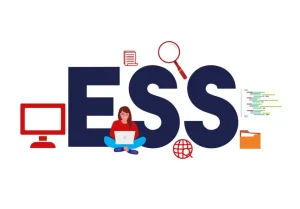In the dynamic landscape of modern organizations, efficient workforce management is paramount for sustainable growth and success.
Employee Self Service (ESS) in BCPSS (Baltimore City Public School System) revolutionizes HR processes, empowering employees to manage tasks independently, enhancing efficiency and engagement.
Join us on this journey as we unravel the transformative potential of Employee Self Service in shaping the future of workforce management.
Introduction To Employee Self Service (Ess):
ESS is a web-based application that allows employees to perform various HR-related tasks independently, reducing the administrative burden on HR departments. These tasks may include accessing payroll information, updating personal details, requesting time off, and enrolling in benefits programs.
Importance Of Employee Self Service In Modern Organizations:

ESS plays a pivotal role in modern organizations by fostering employee empowerment, improving operational efficiency, and promoting self-service culture. Organizations can streamline processes, reduce errors, and enhance overall productivity by enabling employees to access and manage their own information.
Understanding The Employee Self-Service System:
How It Works:
- ESS operates through a user-friendly interface accessible via web browsers or mobile applications.
- Employees log in using secure credentials and navigate various modules to perform desired tasks.
- The system is designed to be intuitive, allowing even non-technical users to utilize its features effectively.
Features And Benefits:
- 24/7 Accessibility: Employees can access ESS anytime, anywhere, eliminating the constraints of traditional office hours.
- Streamlined Processes: ESS automates routine HR tasks, reducing paperwork and manual intervention.
- Enhanced Accuracy: ESS minimizes data entry errors by allowing employees to input and update their own information.
- Improved Employee Satisfaction: Empowering employees with self-service capabilities enhances their overall experience and job satisfaction.
Implementing Ess In Bcpss (Baltimore City Public School System):
Challenges Faced:
- Technical Complexities:
Additionally, the technical complexities involved in setting up ESS presented another hurdle. BCPSS had to allocate resources and expertise to ensure a smooth integration process.
- Data Security Concerns:
Moreover, there were concerns about data security. Safeguarding sensitive employee information from potential breaches was paramount, requiring robust security measures to be implemented.
Solutions And Best Practices:
- Training Programs:
BCPSS educated employees about ESS benefits to overcome resistance to change. Thorough training ensured effective ESS utilization.
- Data Security:
BCPSS implemented encryption, access controls, and audits to safeguard employee information, instilling confidence in data safety within the ESS system.
- Integration Success:
Through training and data security measures, BCPSS seamlessly integrated ESS, enhancing efficiency and satisfaction.
Streamlining Processes With Ess:
ESS has significantly streamlined HR processes within BCPSS, reducing administrative overhead and improving efficiency. Tasks that previously required manual intervention, such as timekeeping and benefits enrollment, can now be completed swiftly through the self-service portal.
Enhancing Employee Experience Through Ess:

By empowering employees with greater control over their HR-related activities, ESS has enhanced the overall employee experience within BCPSS. Employees appreciate the convenience of accessing information and completing tasks independently, leading to higher engagement and satisfaction.
Security Measures And Data Privacy Concerns:
Implementing Encryption:
Encryption is a fundamental security measure that protects data by encoding it so only authorized users can decipher it. Organizations can prevent unauthorized access and ensure confidentiality by encrypting data stored within the ESS system.
Access Controls:
Implementing access controls helps organizations manage who can access specific data within the ESS system. By defining user roles and permissions, organizations can restrict access to sensitive information only to authorized personnel, reducing the risk of data breaches.
Regular Audits:
Regular ESS system audits are essential to proactively identify and address any security vulnerabilities or compliance issues. By conducting regular audits, organizations can ensure that security measures remain effective and compliant with relevant regulations.
Data Privacy Compliance:
Compliance with data privacy regulations, such as GDPR (General Data Protection Regulation) or CCPA (California Consumer Privacy Act), is crucial to protecting employee data. Organizations must ensure their ESS system complies with applicable data privacy laws and regulations to maintain trust and avoid legal repercussions.
Employee Awareness:
Employee awareness and training are vital in maintaining data security and privacy. Organizations should educate employees about the importance of data security, the risks of unauthorized access, and best practices for protecting sensitive information.
Measuring The Success Of Ess Implementation:

User Adoption Rates:
One of the primary indicators of success is the rate of adoption among employees. Higher user adoption rates indicate that employees actively use the ESS system to perform HR-related tasks, such as accessing payroll information, updating personal details, and requesting time off.
Efficiency Gains:
Another measure of success is the efficiency gains achieved through ESS implementation. Compared to traditional manual methods, organizations can assess the time saved on administrative tasks, such as processing employee requests and managing paperwork.
Cost Reductions:
ESS implementation can reduce costs by streamlining HR processes and reducing administrative overhead. Organizations can measure cost savings achieved through reduced paperwork, decreased manual labor, and optimized resource allocation.
Employee Feedback:
Collecting feedback from employees about their experience with the ESS system is essential for evaluating its effectiveness. Positive feedback indicates that the system is user-friendly, intuitive, and meets the needs of employees, while negative feedback can highlight areas for improvement.
Compliance And Accuracy:
Ensuring compliance with relevant regulations and maintaining data accuracy are critical aspects of ESS implementation. Organizations can measure success by assessing compliance with data privacy laws, accuracy of employee records, and adherence to internal policies and procedures.
Operational Impact:
Assessing the operational impact of ESS implementation involves evaluating its effects on overall organizational efficiency, productivity, and employee satisfaction. Organizations can measure success by analyzing key performance indicators (KPIs) related to workforce management, such as employee turnover rates, absenteeism, and productivity levels.
Conclusion
Employee Self Service has emerged as a transformative tool for modern organizations, revolutionizing how HR tasks are managed and executed. In the case of BCPSS, the successful implementation of ESS has resulted in tangible benefits, including enhanced efficiency, improved employee satisfaction, and streamlined processes. As technology evolves, ESS will remain at the forefront of workforce management, driving productivity and empowering employees.
Related Questions:
1. What Is Employee Self-Service (Ess)?
Employee Self Service (ESS) is a web-based platform that enables employees to manage their HR-related tasks independently, such as updating personal information, accessing payroll data, and requesting time off.
2. How Does Ess Benefit Organizations?
ESS benefits organizations by streamlining HR processes, reducing administrative overhead, improving data accuracy, and enhancing employee satisfaction.
3. What Are Some Common Challenges Associated With Ess Implementation?
Common challenges include resistance to change, technical complexities, data security concerns, and the need for comprehensive training and support.
4. How Can Organizations Measure The Success Of Ess Implementation?
Success can be measured through user adoption rates, efficiency gains, cost reductions, and employee feedback.
5. What Does The Future Hold For Employee Self-Service?
The future of ESS is marked by continued innovation, with trends such as predictive analytics, artificial intelligence, and mobile integration shaping the workforce management landscape.
READ MORE:

